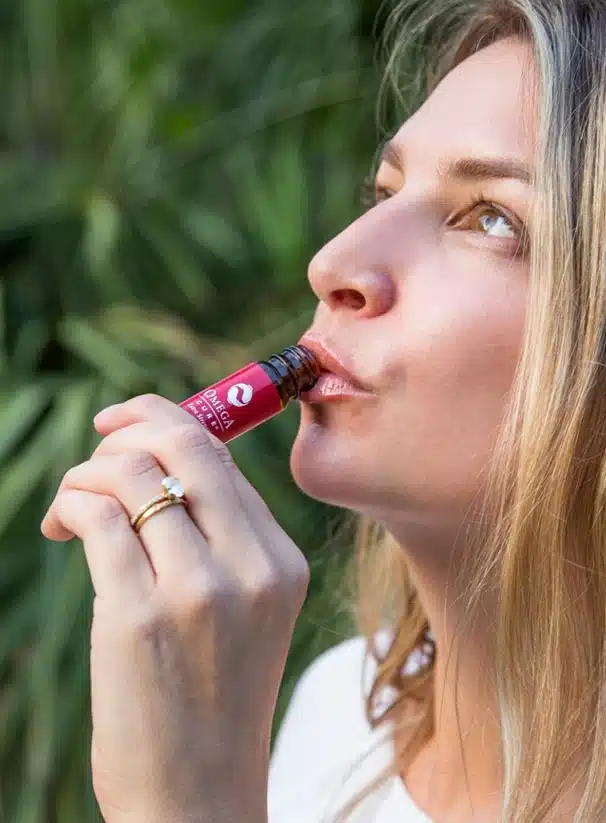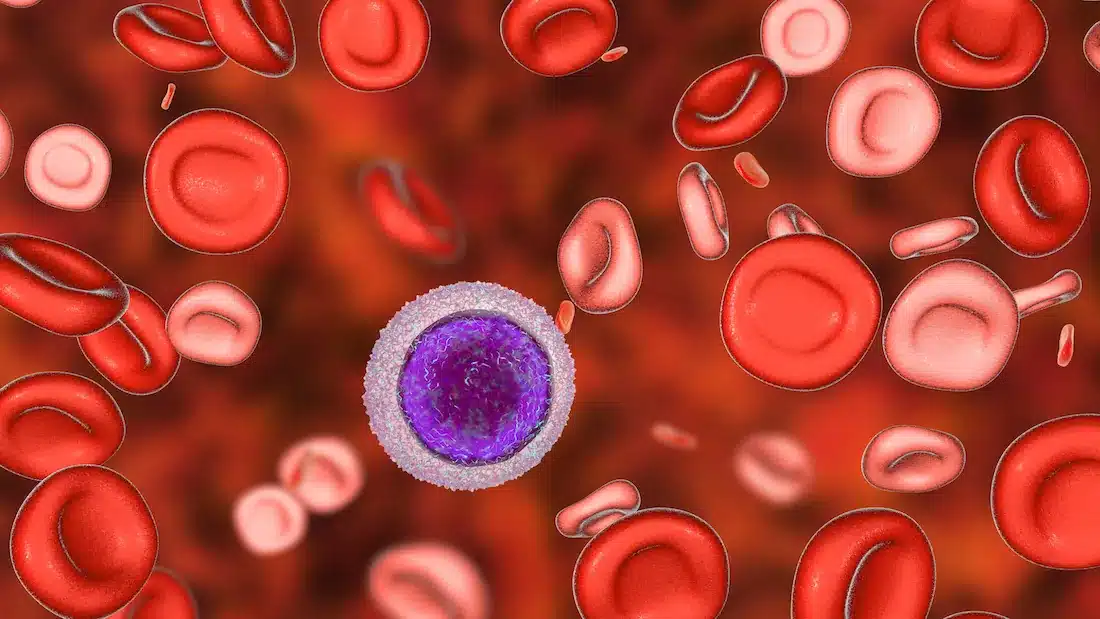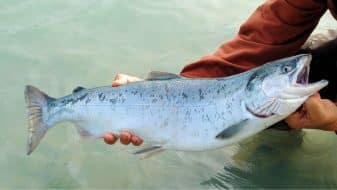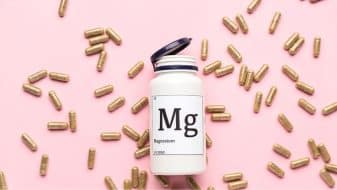The 4 Benefits of Iron Intake and Aging
Iron is one of those nutrients where balance is key. Your body needs enough to function properly, but too much can cause problems. As we age, iron levels become even more important to monitor. Not getting enough iron can lead to anemia, a condition that causes fatigue, weakness, and other health concerns. On the other hand, iron overload has been linked to chronic diseases, including neurodegenerative conditions and metabolic disorders.
A growing body of research suggests that anemia is more common in older adults than previously thought. According to a study published in the journal Mechanisms of Aging and Development, 10% of adults over 65 are anemic, with that number rising to 20% for individuals over 85 (1). The rates are even higher for those in assisted living facilities.
These numbers make it clear—keeping your iron levels in check as you age is a big deal for staying healthy, keeping your energy up, and avoiding potential health issues. In this article, we’ll break down the benefits of iron on aging and how much iron you really need.
How Much Iron Do We Need?
Our need for iron changes throughout life, but after a certain point, it stays pretty steady. Babies and teenagers require more iron due to rapid growth, while adults need a consistent but moderate intake. Men between 19 and 50 need about 8 mg of iron per day, whereas women in that same age group require 18 mg daily to account for menstrual blood loss (2). However, after menopause, a woman’s iron needs drop significantly to 8 mg per day, matching men’s requirements.
This shift is important because postmenopausal women are no longer losing iron through menstruation, which means their body iron stores naturally increase. While getting enough iron is still essential, excessive iron intake at this stage can lead to problems, including a higher risk of chronic diseases. That’s why iron supplementation isn’t typically recommended for older adults unless there’s a diagnosed deficiency.
Instead of automatically reaching for supplements, focusing on iron absorption through food sources is often a better strategy. Your body absorbs iron best from animal sources like red meat, poultry, and oily fish (known as heme iron). Plant-based sources like beans, spinach, and fortified cereals (non-heme iron) can also help—especially when paired with vitamin C to boost absorption. On the flip side, too much calcium or certain compounds in coffee and tea can block iron absorption, so timing your meals and supplements correctly can make a difference in maintaining healthy iron levels.
Benefits of Iron on Aging
Iron plays a role in everything from keeping your energy levels up to helping your immune system fight off infections. But one of the biggest reasons iron matters as we age is its impact on our cells’ powerhouses—our mitochondria. These tiny structures produce the energy our bodies need, and they rely on iron to do their job. Research suggests that keeping iron levels in check can help protect these energy producers, reducing oxidative stress and supporting overall health and longevity (3).
Here’s how iron helps your body function at its best as you age:
1. DNA Repair
Think of iron as a key ingredient in the process that keeps your cells healthy and functioning properly. Your body is constantly repairing itself, replacing old or damaged cells with new ones. Iron helps with DNA repair (4), which is crucial for maintaining healthy skin, strong immune cells, and properly functioning blood cells.
When your body doesn’t have enough iron, this repair process slows down. That can lead to things like weaker skin, a sluggish immune system, and low energy levels (4). But when you get enough iron, your body can stay on top of repairs.
2. Immune Function
A well-functioning immune system is your body’s first line of defense against colds, infections, and other illnesses. Iron plays a major role in keeping your immune system running smoothly by supporting key immune cells that fight off harmful bacteria and viruses.
Macrophages, neutrophils, and natural killer (NK) cells—some of the most important immune cells—depend on iron to do their jobs. When your body has enough iron, these cells can detect and destroy germs more effectively, keeping you healthier and better protected from infections. Research even suggests that proper iron levels can help your immune system stay sharp as you age (5), reducing the risk of frequent illnesses.
3. Oxygen Transport
If you’ve ever felt weak or out of breath for no clear reason, low iron levels might be to blame. That’s because iron is essential for producing hemoglobin (5), the protein in red blood cells that carries oxygen throughout your body. Without enough iron, your muscles and organs don’t get the oxygen they need to function properly.
Good iron levels mean better oxygen flow, which helps with energy levels, muscle strength, and even brain function. This is especially important as we age, since oxygen delivery naturally slows down over time. Making sure your body has enough iron can help keep you feeling energized, whether you’re going for a walk, lifting groceries, or simply getting through a busy day.
4. Energy Function
Iron is also a key part of how your body produces energy at the cellular level (6). It helps your cells generate fuel, keeping you from feeling sluggish or worn out. When your iron levels are where they should be, you’re more likely to have the energy to stay active, think clearly, and tackle your daily activities without feeling drained.
Many older adults don’t realize they’re low on iron until symptoms start affecting their daily life.
Signs of Iron Deficiency Anemia in Older Adults
Iron deficiency anemia happens when your body doesn’t have enough iron to make healthy red blood cells (6). Since iron is responsible for carrying oxygen throughout the body, low levels can leave you feeling exhausted, weak, and out of breath—sometimes even when doing simple everyday activities.
If you’re experiencing any of the following symptoms, it could be a sign that your iron levels are too low:
- Extreme fatigue
- Weakness
- Pale skin
- Chest pain, fast heartbeat, or shortness of breath
- Headache, dizziness, or lightheadedness
- Cold hands and feet
- Inflammation or soreness of your tongue
- Brittle nails
- Unusual cravings for non-nutritive substances, such as ice, dirt, or starch
These symptoms can be easy to brush off as part of aging, but they may indicate an underlying issue with iron levels. If you recognize these signs, it’s worth talking to your doctor about checking your iron status to see if adjustments to your diet or supplementation could help.
A Note On Excess Iron
While iron is essential for good health, too much of it can cause problems—especially as we age. Unlike some other nutrients, the body doesn’t have an easy way to get rid of excess iron.
When levels get too high, iron can build up in the organs, a condition known as iron overload (8). This can lead to serious health concerns, including an increased risk of Type 2 diabetes, certain cancers, and neurodegenerative diseases like Parkinson’s and Alzheimer’s (2).
One of the biggest concerns with excess iron is its effect on the brain. Research suggests that brain iron accumulation is linked to cognitive decline and may play a role in diseases like Alzheimer’s (9). While scientists haven’t established a direct cause-and-effect relationship, studies have found that people with neurodegenerative conditions often have higher iron levels in certain parts of the brain (10). Maintaining proper iron homeostasis—or balance—is key to avoiding potential risks.
Another reason older adults should be mindful of their iron intake is that their needs change over time. Before menopause, women require more iron due to blood loss from menstruation. But after menopause, their iron requirements drop significantly, matching those of men. This means that many older adults get all the iron they need from food alone, making additional supplementation unnecessary (11).
Maintaining a well-rounded diet is the best way to ensure you’re getting the right nutrients in the right amounts. Include iron-rich foods like lean meats, oily fish, beans, and spinach in your diet.
Other Essential Nutrients We Need As We Age
Iron isn’t the only nutrient that plays a critical role in aging well. As we get older, maintaining the right balance of vitamins and minerals is essential for energy, brain function, heart health, and strong bones. Nutrients like omega-3 fatty acids, vitamin D and calcium have a major impact on overall well-being and may even influence how our bodies metabolize iron.
Omega 3 Fatty Acids
Omega-3 fatty acids are well known for their anti-inflammatory properties, which is particularly important as we age. Chronic inflammation can interfere with how the body uses iron (12), preventing stored iron from being used to create healthy red blood cells. This can contribute to anemia, fatigue, and overall weakness. By reducing inflammation, omega-3s help ensure that iron is available where it’s needed most.
To enjoy the anti-inflammatory benefits of omega-3s, it’s important to pay attention to dose. Studies show it typically takes between 2000 – 3000 mg of EPA/DHA omega-3s daily to reduce inflammation markers in the body. These doses can be hard to achieve through diet alone or traditional fish oil capsules.
To get an effective omega-3 dose, your best bet is to look for a high quality liquid fish oil supplement. For example, Omega Cure® Extra Strength provides 3000 mg of EPA/DHA omega-3s in one drinkable serving.
Vitamin D & Calcium
Strong bones are the foundation of an active, healthy lifestyle, and vitamin D and calcium work together to keep bones strong and reduce the risk of fractures. Calcium is essential for maintaining bone density, while vitamin D helps the body absorb and use calcium effectively. Without enough vitamin D, even a calcium-rich diet won’t be as beneficial.
Interestingly, vitamin D and iron metabolism are closely linked. Research suggests that vitamin D may influence erythropoiesis—the process of making red blood cells—while iron is essential for vitamin D synthesis (14). This means that low levels of either nutrient can affect the other, potentially leading to issues like anemia or weakened bones.
However, it’s also important to be mindful of calcium intake. Studies have shown that too much calcium can interfere with iron absorption (15), so if you’re supplementing with calcium, it’s best to take it at a different time of day than your iron-rich meals.
Nutrition Supplements For Optimal Health
While food should always be the primary source of essential nutrients, supplements can help fill in the gaps when diet alone isn’t enough.
- Iron supplements may be beneficial for those struggling with anemia or low iron levels, but they should always be taken under medical supervision. Since too much iron can be harmful, it’s important to test iron levels before supplementing.
- Omega-3 supplements offer added benefits for heart health, brain function, and inflammation. Since the majority of people don’t get enough omega-3s from their diet – about 95% have low levels in the USA – getting a high quality supplement can make a key difference. For benefits, make sure your supplement delivers an adequate dose per servings (at least 2000 – 3000 mg of EPA/DHA).
Age Well With a Balanced Approach to Nutrition
As we age, nutrition plays a bigger role than ever in how we feel, move, and function. A well-balanced diet isn’t just about avoiding deficiencies—it’s about giving your body the fuel it needs to stay strong, energized, and resilient. Iron, along with a balance of other nutrients like omega-3s, vitamin D, and calcium, plays a crucial part in maintaining long-term health.
- Fairweather-Tait SJ, Wawer AA, Gillings R, Jennings A, Myint PK. Iron Status in the Elderly. Mechanisms of Ageing and Development. 2014;136-137(100):22-28. doi:https://doi.org/10.1016/j.mad.2013.11.005
- Should Older Adults Take Iron Supplements? Revisiting a Controversy. Institute on Aging. Published June 19, 2018.
https://www.ioaging.org/aging/should-older-adults-take-iron-supplements-revisiting-a-controversy/ - Tian Y, Tian Y, Yuan Z, et al. Iron Metabolism in Aging and Age-Related Diseases. International Journal of Molecular Sciences. 2022;23(7):3612–N.PAG. doi:https://doi.org/10.3390/ijms23073612
- Zeidan RS, Martenson M, Tamargo JA, et al. Iron Homeostasis in Older Adults: Balancing Nutritional Requirements and Health Risks. The Journal of Nutrition, Health and Aging. 2024;28(5):100212. doi:https://doi.org/10.1016/j.jnha.2024.100212
- Ni S, Yuan Y, Kuang Y, Li X. Iron Metabolism and Immune Regulation. Frontiers in Immunology. 2022;13. doi:https://doi.org/10.3389/fimmu.2022.816282
- Lakhal-Littleton S, Robbins PA. The Interplay Between Iron and Oxygen Homeostasis with a Particular Focus on the Heart. Journal of Applied Physiology. 2017;123(4):967-973. doi:https://doi.org/10.1152/japplphysiol.00237.2017
- Moustarah F, Mohiuddin SS. Dietary Iron. PubMed. Published January 8, 2024.
https://www.ncbi.nlm.nih.gov/books/NBK540969/ - Cleveland Clinic. Hemochromatosis (Iron Overload): Causes, Symptoms, Treatment, Diet & More. Cleveland Clinic. Published January 1, 2021.
https://my.clevelandclinic.org/health/diseases/14971-hemochromatosis-iron-overload - Wang F, Wang J, Shen Y, Li H, Rausch WD, Huang X. Iron Dyshomeostasis and Ferroptosis: A New Alzheimer’s Disease Hypothesis? Frontiers in Aging Neuroscience. 2022;14. doi:https://doi.org/10.3389/fnagi.2022.830569
- Levi S, Ripamonti M, Moro AS, Cozzi A. Iron Imbalance in Neurodegeneration. Molecular Psychiatry. Published online January 12, 2024:1-14. doi:https://doi.org/10.1038/s41380-023-02399-z
- Iron Supplementation Typically Not Recommended for Postmenopausal Women. Mayo Clinic News Network.
https://newsnetwork.mayoclinic.org/discussion/iron-supplementation-typically-not-recommended-for-postmenopausal-women/ - National Institute of Diabetes and Digestive and Kidney Diseases. Anemia of Inflammation or Chronic Disease | NIDDK. NIDDK. Published October 16, 2019.
https://www.niddk.nih.gov/health-information/blood-diseases/anemia-inflammation-chronic-disease - Krupa K, Fritz K, Parmar M. Omega-3 Fatty Acids. PubMed. Published 2021.
https://www.ncbi.nlm.nih.gov/books/NBK564314/ - Malczewska-Lenczowska J, Sitkowski D, Surała O, Orysiak J, Szczepańska B, Witek K. The Association between Iron and Vitamin D Status in Female Elite Athletes. Nutrients. 2018;10(2):167. doi:https://doi.org/10.3390/nu10020167
- Omega. Omega 3 Content Brief #1 (February 2025). Google Docs. Published 2025. Accessed March 17, 2025.
https://docs.google.com/document/d/1W_x3iTqIBZERLTxfYZipa9SmvbM-StOafxHfiuG9PsU/edit?tab=t.0
Recent Posts
-
Bone Health, Brain Health, Heart Health, Immune Health
The 4 Benefits of Iron Intake and Aging
Iron is one of those nutrients where balance is key. Your body needs enough to function properly, but too much can cause problems. As we age, iron levels become even...3 weeks ago -
Uncategorized
4 Benefits of Giving Fish Oil To Your Dog
If you’ve ever taken fish oil for its brain, joint, or heart benefits, you might be wondering—is fish oil good for dogs, too? The answer is yes! Fish oil is...3 weeks ago -
Brain Health
How to Manage ADHD in Adults Without Medication
In recent years, more adults have been speaking up about their struggles with ADHD—recognizing that it’s not just a childhood condition but something that continues to affect daily life well...1 month ago -
Omega-3
The Relationship Between Vitamin D and Skin Health
Vitamin D, often called the "Sunshine Vitamin," is essential for many aspects of health, but one of its most overlooked benefits is its role in skin health. While we often...1 month ago -
Omega-3
Wild Salmon vs Farmed Salmon: Which is Better For Your Health?
Salmon is widely praised as one of the healthiest fish you can eat. It’s packed with high-quality protein, omega-3 fatty acids, and essential vitamins like B12, D, and selenium. Omega-3s—particularly...2 months ago -
Omega-3
Magnesium Glycinate vs. Threonate: 5 Key Differences
Magnesium is a powerhouse mineral, working behind the scenes to keep over 300 enzyme systems in your body functioning properly. It plays a vital role in muscle and nerve function,...2 months ago










